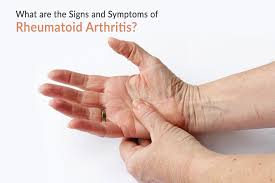Early Signs of Rheumatoid Arthritis: What You Shouldn’t Ignore
Rheumatoid arthritis (RA) is more than just joint pain. It’s a long-term autoimmune condition that causes the immune system to attack healthy joint tissue, often leading to swelling, stiffness, and damage. Many people in New York live fast-paced lives and may brush off early symptoms as stress or fatigue. But catching the signs of rheumatoid arthritis early can make a real difference.
One option to treat rheumatoid arthritis for short term is using medication that helps relieve pain and improve mobility. In this blog, we’ll break down what those early signs look like, when to talk to a doctor, and how short-term relief such as the Aspadol tablet can help manage the pain while working toward a long-term treatment plan.
What Is Rheumatoid Arthritis?
Rheumatoid arthritis is a chronic condition that mostly affects the joints but can also impact the lungs, eyes, heart, and blood vessels. It is different from osteoarthritis, which is caused by wear and tear. RA, on the other hand, happens when the immune system attacks your own body tissue.
It usually starts between the ages of 30 and 60, but it can affect younger people too. Women are more likely to develop RA than men, and living in a cold climate like New York can sometimes make symptoms feel worse.
Common Early Signs of Rheumatoid Arthritis
1. Morning Joint Stiffness
One of the first signs of rheumatoid arthritis is stiffness in your joints especially after waking up. This stiffness usually lasts for more than 30 minutes and can affect your hands, knees, or ankles.
If you find it hard to move around or open jars in the morning, don’t ignore it. It may not just be normal aging it could be the start of RA.
2. Swollen Joints
Swelling is another early clue. It usually begins in the small joints of your fingers and toes. The joints may look puffy or feel warm to the touch.
Unlike injury-related swelling, RA swelling comes and goes and may affect both sides of the body.
3. Fatigue
Feeling tired all the time especially without a clear reason is common with RA. This fatigue can start before any joint pain shows up.
Chronic inflammation in the body wears you down, making even small tasks feel overwhelming.
4. Mild Fever
A slight increase in body temperature is often a result of inflammation. If you’ve had low-grade fevers without any flu or cold, it might be linked to RA.
Keep track of your symptoms. If the fever pairs with joint pain, it’s time to consider RA testing.
5. Weight Loss
Unexplained weight loss can be another signal. Inflammation increases your metabolism and breaks down muscle, leading to weight loss over time.
If you notice yourself losing weight without changing your diet or exercise, talk to your doctor.
6. Joint Redness and Warmth
Inflamed joints may appear red and feel hot. This is due to increased blood flow and inflammation in the joint area.
Again, if this happens in multiple joints or on both sides of the body, RA could be the cause.
How Rheumatoid Arthritis Affects Daily Life in New York
Living in New York adds extra pressure to your joints. Cold winters, long commutes, and active routines can all trigger or worsen symptoms. When RA starts to affect your ability to get to work, play with your kids, or even just get through the day, it becomes a serious concern.
That’s why early detection and prompt treatment matter.
When to See a Doctor
If you’re experiencing two or more of these signs for more than six weeks, you should speak with a rheumatologist. Early diagnosis allows you to begin disease-modifying treatments that can slow down joint damage.
Delaying treatment can lead to permanent joint damage, making daily tasks difficult or even impossible later in life.
Treatment Options: What Works?
RA has no cure, but treatment can reduce inflammation, manage pain, and help you lead a productive life.
1. Disease-Modifying Anti-Rheumatic Drugs (DMARDs)
These are the go-to long-term treatments. They reduce immune system activity to prevent joint damage.
2. Biologics
These are advanced medicines that target specific parts of the immune system. They are often used when DMARDs don’t work well.
3. NSAIDs and Steroids
These help with inflammation and short-term pain but aren’t ideal for long-term use.
Short-Term Relief: Aspadol Tablet
For many patients, especially in the early stages, pain and stiffness are the most frustrating parts of RA. The Aspadol tablet (tapentadol) offers short-term pain relief by working on both pain signals and the emotional response to pain.
Doctors sometimes recommend Aspadol for patients dealing with moderate to severe RA pain, especially while starting DMARDs or waiting for long-term medications to take effect.
Note:
Aspadol is not a long-term solution. It should be used as part of a broader treatment plan under medical supervision.
Why Early Treatment Matters
Early treatment can slow down the progress of the disease and even lead to remission. In New York, where schedules are tight and healthcare is fast-paced, you don’t want to let symptoms linger.
Catching signs of rheumatoid arthritis early means fewer doctor visits later, less joint damage, and more freedom to enjoy your lifestyle.
Tips to Manage RA Symptoms at Home
While medical treatment is important, you can also take steps at home:
- Stay active with low-impact exercises like swimming or yoga.
- Use heat therapy in the morning and cold packs for inflammation.
- Eat an anti-inflammatory diet rich in omega-3s and low in sugar.
- Get enough rest to help your body heal.
- Track your symptoms so you can share accurate info with your doctor.
Conclusion: Listen to Your Body
Many people ignore early symptoms, thinking they’re just tired or overworked. But your body is always sending signals. If you’re noticing joint stiffness, swelling, fatigue, or other signs of rheumatoid arthritis, it’s time to act.
In a city like New York, where fast action and quick solutions are part of daily life, managing RA early can help you stay active, pain-free, and in control.
Talk to your doctor today. If needed, ask about short-term pain options like the Aspadol tablet while exploring long-term treatments. Don’t wait for the pain to take over your life get ahead of it.














Post Comment